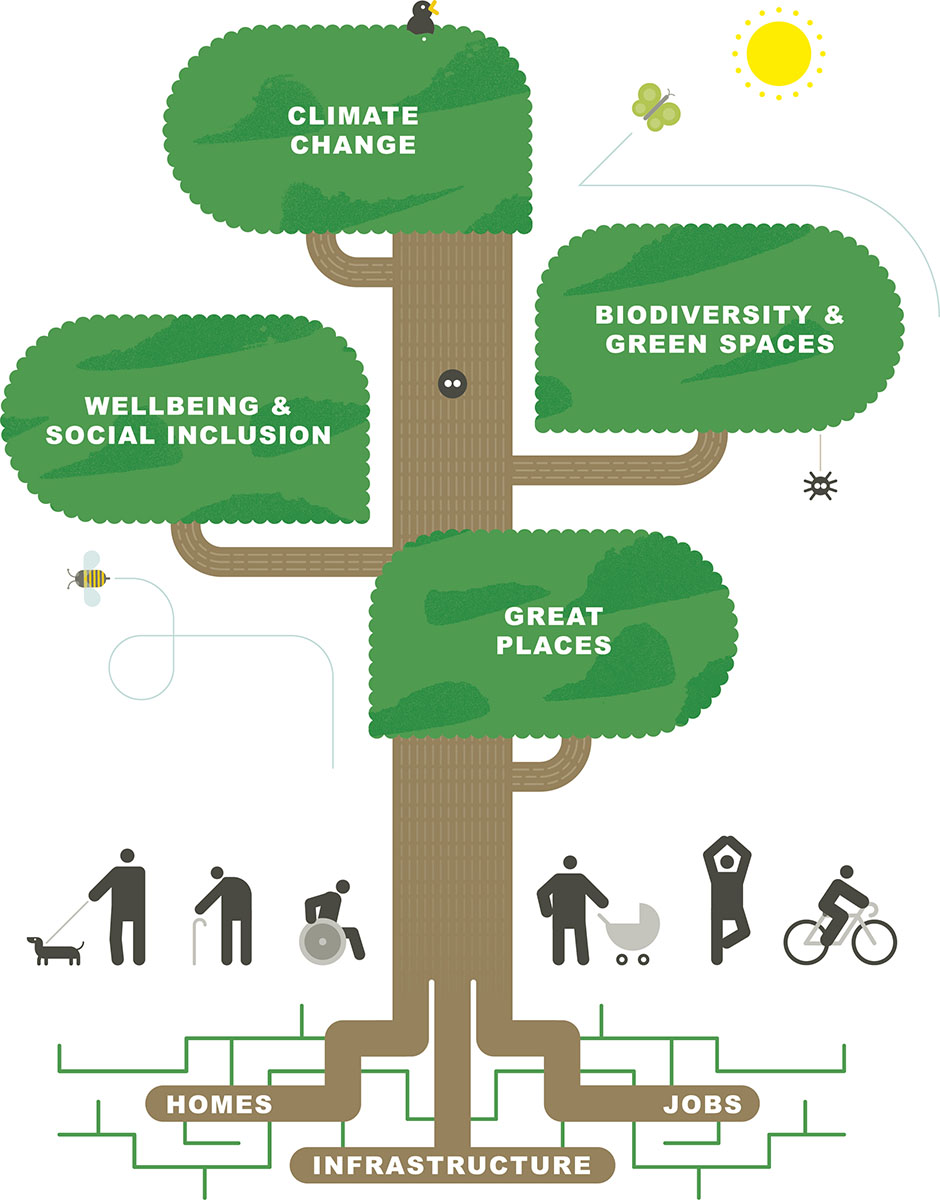Greater Cambridge Local Plan Issues & Options 2020
1. Summary
The new Greater Cambridge Local Plan will shape how our area changes over the period to 2040, and possibly beyond.
The material presented here is the first stage towards preparing the next Local Plan, but it is not the Plan itself. It is intended to start the conversation about the kind of place we want Greater Cambridge to be in the future.
The first part of this document explains the context and process for the Local Plan – how we plan to work with you, our communities, and with our neighbouring local authorities, regional partners and other important groups.
It then explores the 'big themes' that will influence how homes, jobs and infrastructure are planned. These themes draw on the feedback we have received from Councillors, communities and businesses while preparing this document.
The big themes are:
- Climate change – how the plan should contribute to achieving net zero carbon, and the mitigation and adaptation measures that should be required through developments.
- Biodiversity and green spaces – how the plan can contribute to our 'doubling nature' vision, the improvement of existing green spaces and the creation of more.
- Wellbeing and social inclusion – how the plan can help spread the benefits of growth, helping to create healthy and inclusive communities.
- Great places – how the plan can protect what is already great about the area, and design new developments to create special places and spaces.
Figure 1: Diagram illustrating the proposed big themes of the Plan
Within each of these themes we have explained:
- What we are required to do by national legislation and policy.
- What we are doing already, including our existing commitments and growth sites.
- What we think the key issues are, and the big questions that we want you to help us answer.
One big question affecting all these themes will be the number of jobs and homes to plan for. Central government has set us the target of planning for a minimum of around 41,000 homes between 2017 and 2040. We are doing more work to understand future jobs growth and housing growth to support it. However, to give an indication, if the recent high level of jobs growth was to continue, there may be a case for making provision beyond the local housing need to include flexibility in the plan and provide for around 66,700 homes during this period. We already have about 36,400 homes in the pipeline for this period, but it will be for the new Plan to find sites for the rest.
So, after the themes, we have set out some options for where this growth might go. These include:
- Densification of existing urban areas – Providing more homes and jobs on underused land within Cambridge and also potentially in existing new settlements. This could be by building taller buildings, or redeveloping underused sites at higher densities.
- Edge of Cambridge: outside Green Belt – Creating new homes and jobs in extensions on the edge of Cambridge, using land not in the green belt. The only large site on the edge of Cambridge not in the Green Belt is Cambridge Airport.
- Edge of Cambridge: within Green Belt - Creating new homes and jobs in extensions on the edge of Cambridge, involving release of land from the Green Belt.
- Dispersal: new settlements - Creating one or more whole new towns or villages, providing homes, jobs and supporting infrastructure in a new location, and supported by strategic transport infrastructure connecting to Cambridge.
- Dispersal: villages - Spreading new homes and jobs out to the villages, through allocating sites on the edges of villages or increasing the number of homes that can be developed on sites within the villages.
- Public transport corridors - Creating new homes and jobs along key public transport corridors extending out from Cambridge, where they can access high quality public transport. This could be by expanding or intensifying existing settlements, or with new settlements.
While the Local Plan could involve some growth in all these areas, we want to know where you think we should focus and how the big themes should play into this. You can also compare your preferred approach with the approach to development in the adopted and previous Local Plans.
We are committed to an open conversation with you all, and doing this better than we have done in the past. We know that there will be difficult choices to be made, and we will have to find a reasoned balance between the competing interests and priorities that you talk to us about. This first conversation is the moment we need to hear from as many of you as possible, and particularly those who feel that their voices are not always heard.
There are questions throughout this document that we would like you to answer. You can answer as many or few as you like: all your views will be helpful. However, you may also want to provide some general comments if you don't think we have asked all the right questions. In the final section you can tell us about anything else you think we should be considering which is not covered elsewhere.

